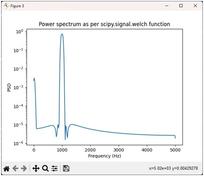Top 10 DSP Interview Questions and Answers
Advertisement
This article provides a set of DSP interview questions and answers useful for those seeking DSP hardware or software job positions. Whether you’re a recent graduate or an experienced professional, these questions can help you prepare for your DSP engineer job interview or viva.
1. Explain the basic DSP architecture. How do you select a DSP architecture suitable for an algorithm under development?
Answer: A Digital Signal Processor (DSP) architecture typically includes specialized components such as a Multiply Accumulate (MAC) unit, parallel execution units, dedicated memory (Harvard architecture), and optimized instruction sets for real-time signal processing.
To select a DSP architecture for an algorithm, consider:
- Computational Complexity : High performance MAC operations for intensive tasks.
- Memory Bandwidth : Harvard architecture for separate instruction and data memory access.
- Power Efficiency : Low power DSPs for battery operated devices.
- Real time Constraints : Multi core DSPs for high speed applications
2. Explain Harvard and Von Neumann architectures and mention the difference between them.
Answer: Harvard Architecture: Uses separate memory for instructions and data, allowing simultaneous access, improving speed (used in DSPs). Von Neumann Architecture: Uses a single memory for both instructions and data, leading to a bottleneck in execution speed. Difference: Harvard provides faster processing and parallelism, whereas Von Neumann is simpler and more flexible but slower.
3. Explain the difference between convolution and correlation.
Answer: Convolution: A mathematical operation combining two signals, where one signal is flipped before sliding over the other, used in filtering and system analysis. Correlation: Measures the similarity between two signals without flipping, used in pattern recognition and signal detection. Key Difference: Convolution applies a system’s impulse response to an input, while correlation determines similarity between signals.
4. Mention FIR and IIR filter basics and differentiate between FIR and IIR filter concepts.
Answer: Both FIR and IIR filters are digital filters.
- FIR stands for Finite Impulse Response.
- IIR stands for Infinite Impulse Response.
In FIR filters, no feedback is used, while IIR filters incorporate feedback at the input. Consequently, FIR filters have a finite impulse response, whereas IIR filters have an infinite impulse response.
5. Explain Interpolation and Decimation and their applications in Digital Signal Processing.
Answer: Interpolation increases the data rate, while decimation decreases the data rate. Interpolation adds samples in between existing data points, and decimation removes samples from within the data.
6. What is FFT? How does it differ from DFT? Explain simple FFT implementation using MATLAB code.
Answer:
- FFT stands for Fast Fourier Transform.
- DFT stands for Discrete Fourier Transform.
FFT performs faster than DFT.
7. What is the difference between a microprocessor and a DSP?
Answer: Microprocessors are generally generic processors used in devices like desktops and laptops. DSPs, on the other hand, are specialized processors designed for specific, complex applications, such as those found in mobile phones, smartphones, and tablets.
Most DSPs feature specialized instruction sets optimized for complex signal processing, enabling them to perform these tasks quickly and with minimal memory usage.
Popular DSP vendors include Texas Instruments (TMS320), Qualcomm, LSI, and Tensilica.
8. How do you convert a floating-point number to a fixed-point format?
Answer: To convert a floating-point number to fixed-point format:
- Choose a Scaling Factor e.g., for Q15 format, multiply by 2^15,
- Round or Truncate the result to fit within the fixed-point range.
- Store as an Integer while interpreting it as a fixed-point value.
- Adjust for Overflow & Precision Loss using saturation techniques if needed.
This conversion is essential for implementing DSP algorithms on hardware with limited precision.
9. Explain how interrupts are handled in a DSP.
Answer: This is particularly relevant when porting protocol stacks to DSPs and FPGAs, or when interfacing different layers (e.g., MAC and PHY). Interrupts facilitate synchronization between these layers.
10. Explain how a DSP chip can be interfaced with an FPGA chip.
Answer: You need to explain the interfacing concepts used for data communication between FPGA and DSP chips.
Additional Resources
In addition to these DSP interview questions and answers, it is also helpful to study the architecture of various DSP chips.
8085 Microprocessor Architecture

Advertisement
 RF
RF
